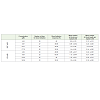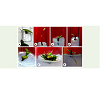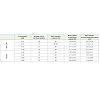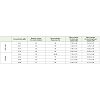In-vitro Propagation of Aromatic Woody Plant Mesua Ferrea Linn
NM Jadhav and MA Deodhar*
Corresponding author: Dr. M.A. Deodhar, Department of Botany Kelkar Education trust’s V.G.Vaze College of Arts, Science and Commerce, Mithagar Road, Mulund (E) Mumbai -81, India, Tel: 09870176411; E-mail: drmadeodhar@gmail.com
Department of Botany, Kelkar Education trust’s V.G.Vaze College of Arts, Science and Commerce, Mithagar Road, Mulund (E)Mumbai -81, India
Citation: Jadhav NM, Deodhar MA . In-vitro Propagation of Aromatic Woody Plant Mesua Ferrea Linn. J Plant Sci Res. 2015;2(1): 120.
Copyright © 2015 MA Deodhar et al. This is an open access article distributed under the Creative Commons Attribution License, which permits unrestricted use, distribution, and reproduction in any medium, provided the original work is properly cited.
Journal of Plant Science & Research | ISSN: 2349-2805 | Volume: 2, Issue: 1
Submission: 24/02/2015; Accepted: 07/04/2015; Published: 13/04/2015
Abstract
Mesua ferrea Linn. is an important aromatic plant found in western Ghats of India, belonging to the family Clusiaceae. The fragrant stamens of the M.ferrea flowers are genuine drugs for Ayurveda. The power of stamen of nagkesar is used in bleeding piles. This tree species is slow growing and do not bear fruits in many regions of Maharashtra. Hence in- vitro propagation of the species was undertaken. Seeds were cultured on Woody Plant Medium (WPM) and Murashige and Skoog (MS) half strength basal medium for germination. One year old potted plantlets and In vitro seedlings were used as explants in the present study. Apical and Axillary buds from in-vitro seedlings and potted plantlets were cultured in WPM and MS media supplemented with BAP (4.43, 8.87, 13.31, 17.75 μM) and K N (4.64, 9.29, 13.93, 18.58 μM). Both in MS and WPM media the optimum shoot initiation was obtained at BAP 4.43 μM and KN 4.64 μM. Shoots elongation were achieved in half strength WPM basal medium supplemented with KN 4.64 μM or BAP 2.3 μM and 4.3 μM. For root initiation, the elongated shoots were subjected to pulse treatment of IBA (1225, 2440, 4900, 9800 μM). Out of these root initiation was obtained in 9800 μM IBA.
Keywords: Micropropagation; In-vitro seed germination; In-vitro shoot initiation; Root initiation
Introduction
The use of fragrance in day to day life is a tradition that has endured from the rituals of ancient cultures to modern life style. It plays a beneficial and purposeful role in adding quality to life with items such as tooth pastes, bath soaps, body creams, scented candles, air freshener, hair care products, insect repellents etc. Presently total world production of essential oils is 11,000 m. tons, out of which India shares 15% holdings and having third position in the world [1]. Out of 25 mega diversity centers two are located in India Western Ghats and the Eastern Himalayan region. Out of 4000 flowering species are reported in Western Ghats nearly 1500 are endemic species. There are more than 200 aromatic species are reported in Western Ghats. They include tree species viz. Gymnacranthera canarica (Kanara nutmeg), Artabotrys odoratissimus (yang yang), Pandanus odorifer (Kewda), Atalantia monophylla, Cinnamomum gracile, Murraya paniculata, Pleiospermum alatum [2]. In vitro approaches have been used and applied for in-situ conservation of germplasm. Propagation of woody aromatic trees through tissue culture has many advantages over conventional propagation method like fast clonal propagation of the elite genotypes, germplasm conservation. The present communication deals with tissue culture propagation of one such aromatic plant Mesua ferrea.
Mesua ferrea Linn. is commonly known as Nagkesar, Ceylon ironwood in English. This tree species are well known for its beautiful fragrance flowers. It is native to wet, tropical part of Sri Lanka, India, Southern Nepal, Burma, Malaysia and Sumatra. In India it is reported in the tropical rain forest of north-east. Western Ghats and Andamans in island [3]. In ancient Ayurvedic literature this plant was recommended for bleeding piles. The product -“Pile Off” capsule contains nagkesar, which help to stop bleeding, shrinks the piles and relives pain.
In present work the young seedlings were used as the explants source and the viable protocol for micropropagation has been standardized.
Material and Methods
Plant material
The mature fruits of Mesua ferrea were collected from forest research center of Padave mazgaon Sawantwadi Sindhudurg district, Maharashtra, India.
Surface sterilization
Seeds were remove from fruits and washed under running tap water. They were treated with 2.5% Teepol for 20 minutes. They were washed trice with tap water. They were treated with 2.5% Dettol for 10 min. Then, washed trice with tap water. Seeds were treated with 0.1% (w/v) systemic fungicide Bavistine (BASF India Ltd., India) for 15 min; again seeds were washed trice with sterile distilled water and then seed-coat was removed with the help of sterile sharp scalpel. Further treatments were carried out in laminar air flow cabinet; initially seeds surface sterilization was carried out using 70% ethyl alcohol for 30 min. followed by three sterile distilled water washes. Then, they were treated with 0.1% (w/v) mercuric chloride for 5 min. The seeds were rinsed three to four times with sterile distilled water. Excess of water was removed by blotting on sterile tissue paper and then, finally seeds were treated with broad spectrum antibiotic ciplox for 1 min. After blotting on sterile tissue paper they were inoculated into sterile medium for seed germination. After about 4 month growth the apical and nodal explants were used for shoot initiation.
One year old potted plantlets explants material such as apical shoot tip and nodal segment were sterilized by same procedure as described above.
Media and culture conditions
The sterile seeds were cultured on half strength Murashige and Skoog (MS) [4], Woody plant medium (WPM) (Lloyd and McCown) [5] without any plant growth regulators and 3% (w/v) sucrose. The pH of the media was adjusted to 5.7 prior to the addition of 0.8% (w/v) agar (Bacteriological grade, Fisher Scientific) and media was utoclaved at 121 °C, 1.05 kg/(cm2 Pa) for 15 min. The culture were maintained at 25 ± 2 °C under 16 h photoperiod provided by the coolwhite fluorescent tubes.
In vitro shoot regeneration
To evaluate the effect of various cytokinins on axillary shoot development, axillary and apical meristematic tissue. Shoot were inoculated on MS and WPM basal medium supplemented with 4.43, 8.87, 13.31, 17.75 μM BAP and 4.64, 9.29, 13.93, 18.58 μM KN. At the intervals of 30 days explants were subcultured and transferred to fresh sterile medium.
Shoot elongation
The shoots about 2-5 mm in length were transferred to an elongation medium composed of half-strength WPM basal medium supplemented with 2.3 μM and 4.6 μM KN and BAP 2.3 μM and 4.3 μM. The elongated shoots were used for rooting experiments.
Root initiation
Elongated Shoots were subjected to pulse treatment of different concentration of indole-3-butyric acid (IBA) (1225, 2440, 4900, 9800 μM). The duration of the dip was 30s and then the treated shoots were maintained in half-strength WPM medium.
Results
Explants source
In present communications one year old potted plantlets and in-vitro germinated seedlings were used as explants. For in-vitro germination, seeds were grown in half-strength MS and WPM medium. The effect of basal medium and the various cytokinins on shoot initiation was studied.
Effect of basal medium on shoot initiation
For shoot initiation, two basal media were used MS and WPM. When WPM was used as basal medium, at 8.87 μM BAP concentration the shoot initiation response was 66.66 % which was increase to 80 % when the concentration of BAP was increased to13.31 μM Where as when MS was used as basal medium at 8.87 μM BAP the shoot initiation response was only 46.66 % which was decreased to 33.33 % at 13.31 μM BAP (Table 1).
Table 1: Effects of different concentrations of BAP and KN in MS on shoot regeneration from in vitro grown seedling explants of M. ferrea Data (Mean ± S.D) were recorded after 3 subculture.
There was also difference in mean number of shoots arising from the explants. In WPM medium at 13.31 μM BAP the mean number of shoots was 2.77 and at the same concentration of BAP when MS was used as basal medium, the mean number per explants was 1.2. Similar observation was made when shoots were inoculated in KN. In WPM medium at 9.29 μM KN the main number of shoot initiation was 2.11, where as in MS medium at same concentration it was 1.12. Hence for further experiments WPM was chosen as basal medium.
Effect of various cytokinin concentrations of shoot regeneration
Initially in-vitro grown seedlings were used as explants source. WPM medium containing a range of BAP (4.43μM to 17.75μM) and Kinetin (KN) (4.64μM to 18.58μM) were selected for shoot regeneration (Figure 1a). At lower concentration of KN from 4.64μM to 9.29μM, shoot initiated from apical or axillary meristem only elongated (Figure 1b), But at higher KN concentrations (13.93μM to 18.58μM) the initiated shoot shriveled up and from the base of this shoot 2-3 new shoot initials developed (Figure 1c). At 18.58μM KN concentration the mean number of shoot initials at the end of 3 month was maximum i.e. 3.4 initials. At 13.93μM KN comparatively produced less shoot initials the mean number was 2.8 (Figure 1d).
Figure 1: Micropropagation of M. ferrea. from in-vitro seedling explants. a) In-vitro seed germination. b) Shoot development from apical and lateral meristem on WPM basal medium + 4.46 μM KN. c) Multiple shoots development on WPM medium + 18.58 μM KN d) Shoot development on WPM medium + 8.87 μM BAP. e) Shoot proliferation and greening on WPM medium + 13.31 μM BAP f) Greening of the nodal explant and multiple shoot development on WPM medium + 13.31 μM BAP g) Root initiation on WPM Half-strength + 9800 μM IBA.
BAP comparatively gave better shoot initiation response. At BAP concentration (13.31μM to 17.75μM) the axillary shoot initiated shriveled up and basal tissue proliferated, underwent greening (Figure 1e) and produced number of shoot initials from the explant. At the end of 3rd subculture average number and shoot initials were 4 which increased to 5 to 7 initials at the end of 5th sub-culture (Figure 1f).
Effect of explant source in shoot initiation
When Axillary and apical buds from potted plantlets were used as explants, the shoot regeneration response was comparatively slow. For KN (4.64μM) the number of days required for shoot initial was 30 days. For higher concentration of KN (18.58μM) the number of days reduced to 27 days, contrary to this when in-vitro germinated seedlings were used for KN (18.58μM) the number of days required for shoot regeneration was less (22 days) (Table 2 & 3).
Table 2: Effects of different concentrations of BAP and KN in WPM on shoot regeneration from in vitro grown seedling explants of M. ferrea Data (Mean ± S.D) were recorded after 3 subculture.
Table 3: Effects of different concentrations of BAP and KN in WPM on shoot regeneration from one year potted plantlet explants of M. ferrea Data (Mean ± S.D) were recorded after 3 subculture.
The percentage of shoot regeneration response was also comparatively more for in-vitro plantlets. For potted plantlet at(13.93μM) KN the percentage of shoot regeneration was 66% where as for in-vitro germinated seedling at same concentration of KN (13.93μM) the shoot response was as high as 90%. For (13.31μM) BAP for potted plantlets the shoot initial was 60% and for in-vitro germinated plantlets the shoot regeneration was 80%.
In in-vitro plantlets, the highest number of shoot initiation obtained at 13.31 μM BAP was 2.7. And the same concentration of BAP in potted plantlets the mean number of shoot initials was 1.6. Whereas, potted plantlets at this concentration of BAP the explants never proliferated or shown greening to give rise to multiple shoots.
Elongation of in-vitro shoots
KN 13.93 μM showed higher number of shoot initials. These shoots were separated from the mother plant and then transferred to lower concentrations of KN for elongation (2.3 and 4.6 μM). The best shoot elongation was achieved in 4.6 μM KN. Similarly from BAP 13.31 μM the shoots were transferred to 2.3 μM and 4.3 μM BAP for shoot elongation.
Rooting of regenerated shoots
For the root induction in-vitro elongated shoots were subjected to pulse treatment of different concentration of IBA (1225, 2440, 4900, 9800 μM). Within 27 days, the initiation of roots was observed in medium containing 9800 μM IBA (Figure 1g). However, no root induction was observed on the medium supplemented with lower concentrations of IBA (1225 μM to 4900 μM). The elongated shoots incorporated in half strength WPM medium supplemented with IBA (4.92 μM and 9.84 μM) concentration did not show any root initiation. Effort for hardening of rooted shoots will be undertaken.
Discussion
The micropropagation of tree species is difficult. The main hurdles are excessive contamination, less number of shoot initials and difficulty in rooting of microshoots. To avoid these problems mostly young meristematic tissues are preferred for micropropagation. The variety of M. ferrea found in many regions of Maharashtra do not set fruits, and seed are not available for propagation. But the variety of M.ferrea found in Karnataka appears to be little different from the variety that we get in Maharashtra and it sets fruits. The objective of present study was to standardize a protocol for micropropagation of this plant using immature seed explants. WPM medium supplemented with 13.31 μM BAP or 13.93μM KN was found to be best for in vitro shoot initiation. Shoot elongation was best achieved in 4.6 μM KN and 4.3 μM BAP. The elongated shoots were subjected to pulse treatment of 9800 μM IBA to obtained root initiation. The acclimatization of plantlets is underway. As mentioned in e-flora of Karnataka M. ferrea exhibits 3 sub-species M. thwaitesii, M. pulchella, and M. ferrea [6]. Out of which M. thwaitesii is endemic to Karnataka, India. Our further objective is tissue culture propagation and conservation of this endemic sub-species.
Acknowledgment
I would like to thank the Principal and management of K.E.T ‘s V.G. Vaze College of Arts, Science and Commerce Mulund, Mumbai for providing excellent laboratory facilities. I am also thankful to Mr. Parmod Sawant who is working in forest research center of Padave mazgaon Sawantwadi Sindhudurg district, Maharashtra, India for providing me with plant material.
References
- Singh AK (2011) Essential oil: Their importance for mankind. ChemistryDivision, Vigyan Prasar Science Portal.
- Rao RR, Sagar K, Syamasundar KV (2006) Wild aromatic plant species of Western Ghats: Diversity, Conservation and Utilization. International Seminaron Multidisciplinary Approaches in Angiosperm Systematics.
- Arunachalam A, Khan ML, Singh ND (2003) Germination, Growth and Biomass Accumulation as Influenced by Seed Size in Mesua ferrea L. Turk J Bot 27: 343-348.
- Murashige T, Skoog F (1962) A revised medium for rapid growth andbioassays with tobacco tissue culture. Physiol Plant 15: 473-497.
- Llody G, McCown B (1981) commercially feasible micropropagation of Mountain Laurel Kalmia latifolia by use of shoot tip culture. Int Plant Prop Soc Proc 30: 421-427.
- Florakarnataka.ces.iisc.ernet.in/hjcb2/species.php?id=M&cat=all




